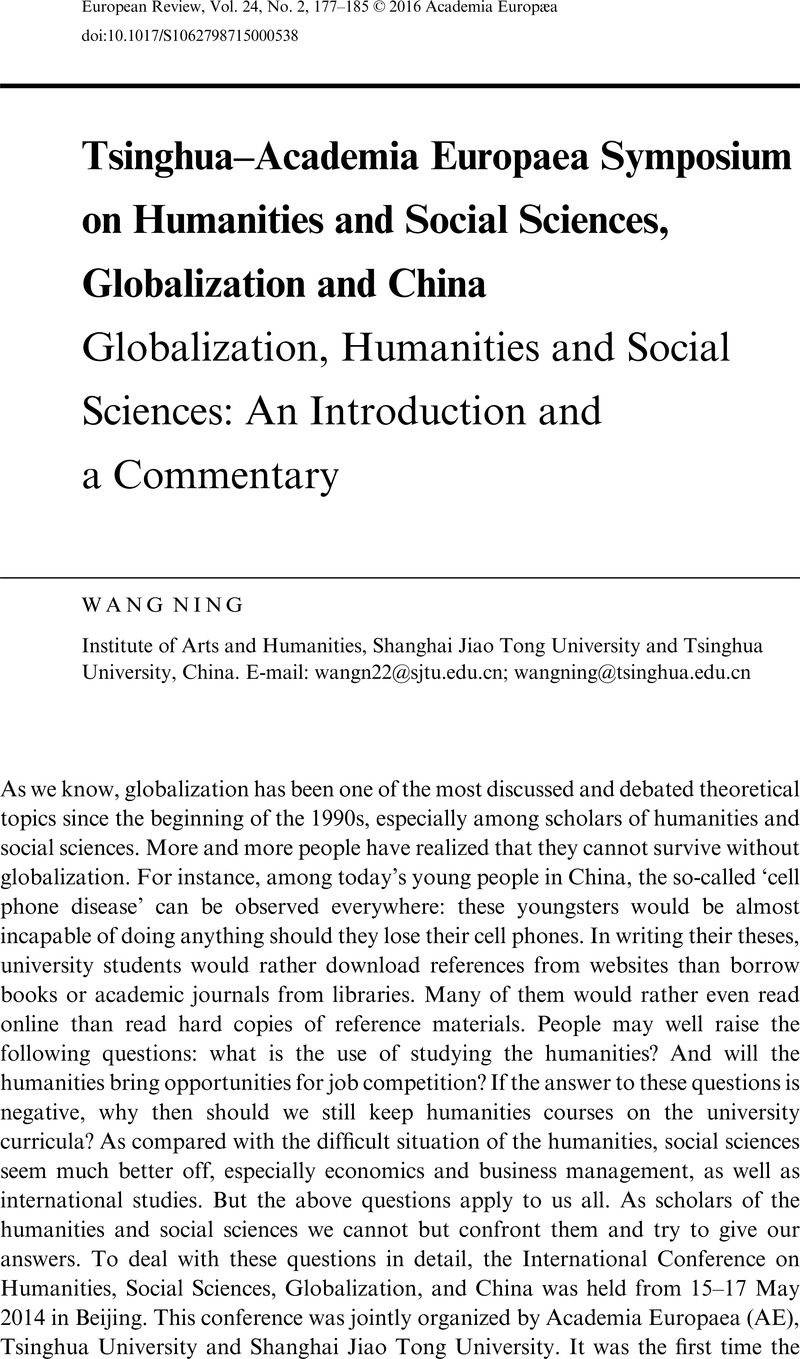No CrossRef data available.
Article contents
Globalization, Humanities and Social Sciences: An Introduction and a Commentary
Published online by Cambridge University Press: 18 April 2016
Abstract
An abstract is not available for this content so a preview has been provided. Please use the Get access link above for information on how to access this content.

- Type
- Tsinghua–Academia Europaea Symposium on Humanities and Social Sciences, Globalization and China
- Information
- Copyright
- © Academia Europaea 2016
References
References and Notes
1.Cf. ‘A Dialogue between Yu Keping and Fukuyama: The Biggest Challenge Confronting the China Mode of Development,’ Beijing Daily, 28 March 2011.Google Scholar
2.Perry, E. J. (2014) Growing pains: challenges for a rising China. Daedalus, 143(2), p. 5.Google Scholar
3.As for China’s de-third-worldizing practice, cf. Ning Wang (2015) Globalisation as glocalisation in China: a new perspective. Third World Quarterly, 36(11), pp. 2059–2074.Google Scholar
4.As for the new images of China in the eye of Western scholarship, cf. the special issue edited by myself with John Aldrich: Rediscovering China: Interdisciplinary Perspectives, in European Review, 23(2) (2015), especially my Introduction, pp. 173–179.CrossRefGoogle Scholar
5.Guthrie, Cf. D. (2012) China and Globalization: the Social, Economic, and Political Transformation of Chinese Society, 3rd edn (New York: Routledge), p. 3.Google Scholar
6.Robertson, R. (1994) Globalisation or glocalisation? Journal of International Communication, 1(1), pp. 38–39.CrossRefGoogle Scholar
7.It was published as Quanqiuhua: shehui lilun he quanqiu wenhua, trans. Liang Guangyan (Shanghai: Shanghai renmin chubanshe, 2000).Google Scholar
8.It was published as Quanqiuhua baikequanshu, trans. Wang Ning et al. (Nanjng: Fenghuang chuban chuanmei jituan, Yilin chubanshe, 2011).Google Scholar
9.As for my discussions on the three topics, cf. Wang Ning (2012) Multiplied modernities and modernisms? Literature Compass, 9(9), pp. 617–622; Wang Ning (2010) Global English(es) and global Chinese(s): toward rewriting a new literary history in Chinese. Journal of Contemporary China, 19(63), pp. 159–174; and Wang Ning (2011) ‘Weltliteratur’: from a utopian imagination to diversified forms of world literatures. Neohelicon, 38(2), pp. 295–306.Google Scholar


